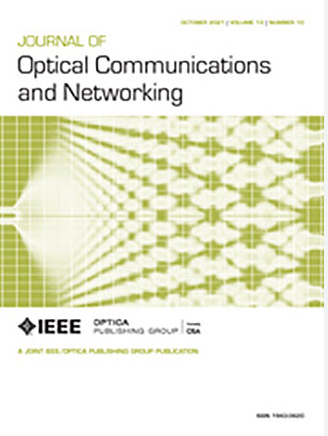ToPro+:考虑端口分配和波导路由的拓扑投影仪,用于波长路由的片上光网络
IF 4.3
2区 计算机科学
Q1 COMPUTER SCIENCE, HARDWARE & ARCHITECTURE
引用次数: 0
摘要
为了支持低功耗和低延迟的高带宽通信,波长路由片上光网络(WRONoCs)被广泛认为是高性能计算系统的一个有吸引力的选择。此外,当前的物理设计友好型拓扑,其中互连优化以匹配物理约束,已引起越来越多的关注。尽管有布局感知互联,但目前的物理设计方法忽略了物理信息,从零开始综合布局。因此,物理设计友好型拓扑的实现面临两个主要问题:(a)从零开始执行物理设计引起的显著计算复杂性;(b)由于布局结果中波导的额外交叉或绕行产生的大量插入损耗而导致的高功耗。为了克服这些问题,我们提出了一种新颖的设计方法,ToPro+,以实现物理设计友好型拓扑。我们没有放弃那些拓扑的布局感知互连,而是通过将拓扑直接投影到布局平面上来充分利用它们。这样,互连完全保留,直接作为一组物理连接,降低了计算复杂度。为了避免波导的额外交叉和绕路,我们优化了从拓扑的输入/输出端口到节点的发送/接收终端的分配以及它们之间的波导路由。实验结果证明了ToPro+的有效性。对于16节点的网络,与两种最新的WRONoC设计方法相比,ToPro+在几秒钟内完成了合成,并将总光功耗降低了约30%。本文章由计算机程序翻译,如有差异,请以英文原文为准。
ToPro+: a topology projector considering port assignment and waveguide routing for wavelength-routed optical networks-on-chip
For supporting high-bandwidth communication with low power and latency, wavelength-routed optical networks-on-chip (WRONoCs) are widely considered an appealing option for high-performance computing systems. Moreover, current physical-design-friendly topologies, where the interconnect is optimized to match physical constraints, have attracted increasing attention. Despite the layout-aware interconnect, current physical design methods overlook the physical information and synthesize layouts from scratch. As a result, the implementation of the physical-design-friendly topologies faces two major concerns: (a) significant computational complexity caused by performing physical design from scratch and (b) high power consumption due to much insertion loss generated by extra crossings or detours of waveguides in the layout results. To overcome them, we propose a novel, to our knowledge, design methodology, ToPro+, to implement physical-design-friendly topologies. Instead of abandoning the layout-aware interconnect of those topologies, we make full use of them by projecting the topologies directly onto a layout plane. In this way, the interconnect is entirely reserved and directly serves as a set of physical connections, which reduces the computational complexity. To avoid extra crossings and detours of waveguides, we optimize the assignment from the input/output ports of a topology to the sending/receiving terminals of nodes and the waveguide routing between them. The experimental results demonstrate the efficiency of ToPro+. For a 16-node network, compared to the two latest WRONoC design methods, ToPro+ synthesizes it within a few seconds and reduces the total optical power consumption by about 30%.
求助全文
通过发布文献求助,成功后即可免费获取论文全文。
去求助
来源期刊
CiteScore
9.40
自引率
16.00%
发文量
104
审稿时长
4 months
期刊介绍:
The scope of the Journal includes advances in the state-of-the-art of optical networking science, technology, and engineering. Both theoretical contributions (including new techniques, concepts, analyses, and economic studies) and practical contributions (including optical networking experiments, prototypes, and new applications) are encouraged. Subareas of interest include the architecture and design of optical networks, optical network survivability and security, software-defined optical networking, elastic optical networks, data and control plane advances, network management related innovation, and optical access networks. Enabling technologies and their applications are suitable topics only if the results are shown to directly impact optical networking beyond simple point-to-point networks.

 求助内容:
求助内容: 应助结果提醒方式:
应助结果提醒方式:


